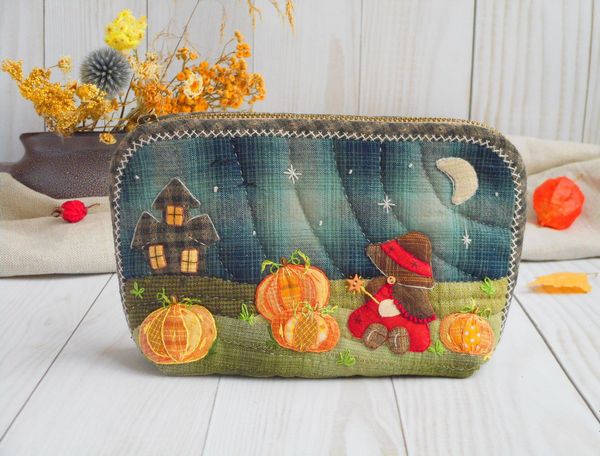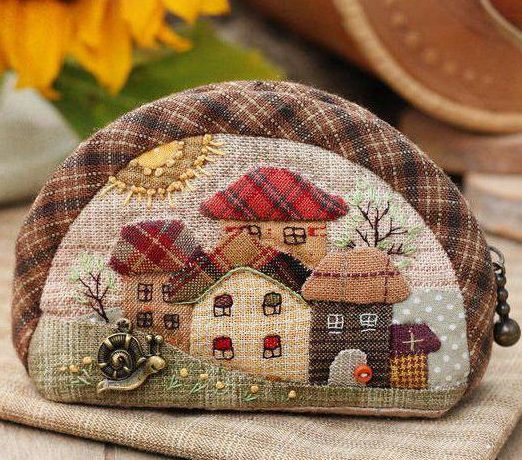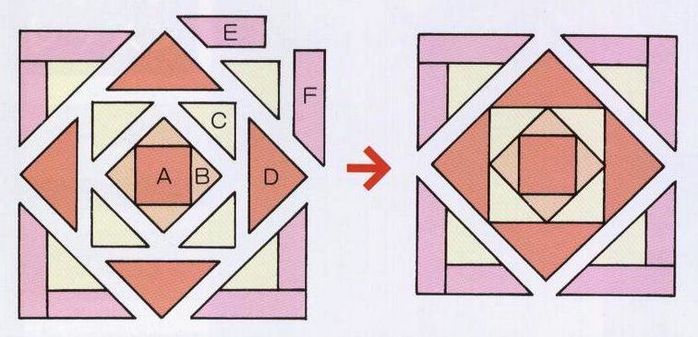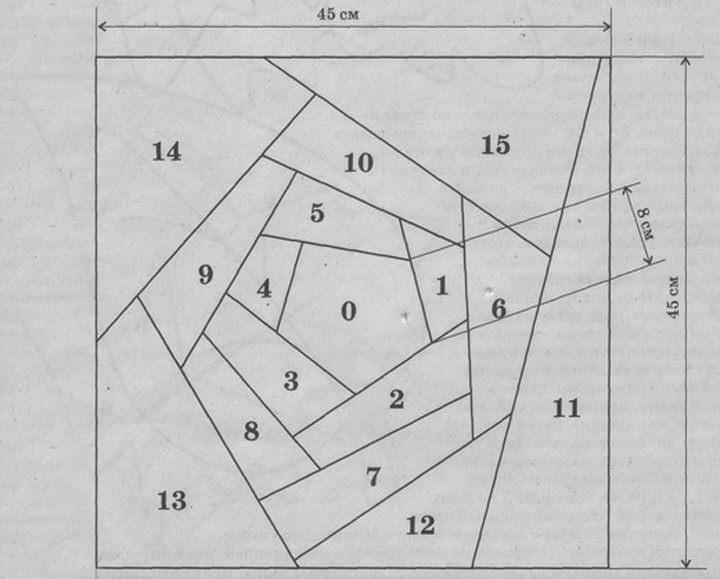 Patchwork is not afraid of any fashionable ups and downs. Technology with a thousand-year history will always have admirers.
Patchwork is not afraid of any fashionable ups and downs. Technology with a thousand-year history will always have admirers.
The main advantage of this sewing method is its versatility.
Patchwork elements look organic on both the blouse and the bag. Therefore, it is not difficult to do it yourself.
Types of patchwork
 Regardless of the style of patchwork, there are two cutting methods:
Regardless of the style of patchwork, there are two cutting methods:
- First, a single canvas is assembled from scraps, then it is cut according to the pattern. This is convenient, but there is a lot of scrap left over.
- First, a pattern is made, and then, based on its outlines, pieces of fabric are sewn into a pattern. A more labor-intensive process, but you can create real masterpieces.
Patchwork techniques
Materials:
- dense natural and mixed fabrics: linen, cotton, viscose;
- matting;
- suede leather;
- tweed, tapestry, drape;
- varnished fabrics.
Advice! The handles of the bags can be sewn to the main part, or made on belt loops and a ring.
Summer bag made using Japanese patchwork technique

The Japanese patchwork technique is a cross between patchwork, mosaic and appliqué.
 We will make a handbag of a simple cut.
We will make a handbag of a simple cut.
Required:
- The main fabric is 0.5-0.7 m, with a width of 1.5 m.
- Scraps of fabric for applique.
- Soft fabric/sintepon for lining the bag.
- Non-woven adhesive.
- Belt rings – 2 pcs.
- Zipper.
- Threads in tone, as well as in contrasting colors.
 Pattern:
Pattern:
- The main part of the bag is 4 folded parts.
- Bottom part – 2 parts with a fold.
- Belt – 1 piece with a bend.
- Belt loops – 2 folded parts. Length 10 cm, width 6 cm with fold.

Advice! Japanese style involves the use of predominantly natural fabrics in natural or similar shades.
A feature of Japanese patchwork is dense stitching, often with threads of a contrasting color.. Stitching lines add both decorativeness and strength.
Such products are also not thin; filler is used.
 Before assembly the product resembles a layer cake:
Before assembly the product resembles a layer cake:
- We decide on the materials.
- Select a design for the product. For the first time, you can create a simple drawing yourself, for example, a house in the “primitive” style or a seven-flowered flower.
- We transfer the details of the patterns onto thick cardboard.
- From the main material we cut out the parts of the bag in duplicate. This is necessary in order to be able to use a dense, voluminous gasket.
- Add a blank of interlining fabric.
- We connect this structure with pins, needles or running stitches along the contour.
- Using a special disappearing pencil or soap, apply the stitch pattern.
- Quilt the parts cleanly.
- Draw the outline of the design onto the fabric.
- Cut the pattern into separate pieces.
- We cut out the details of the design, do not forget about the seam allowance of 0.3-0.3 cm.
- We make small notches along the contour of the resulting fabric blanks.
- We wrap the cardboard elements of the design with fabric ones, bend the edges, and iron them.
Instead of paper, you can use an adhesive pad:
- We apply the mosaic elements to the main part and sew or glue them to the required places. We make a secret seam, capturing literally a few threads.
- We perform an additional stitch along the contour of the front side.
- We decorate with buttons, brooches, embroidery, and beads.
- Sew together the details of the handbag.
- We sew in a lock.
- We process the edges with ready-made or freshly cut bias tape.
- We make a long belt. One piece with a fold equal in width to twice the width of the finished belt, plus seam allowances. We recommend putting a gasket inside for strength.
- Sew the loops on the sides of the bag.
- We insert the rings into the loops and belt.
- Sew up the ends of the belt with rings.
Flat bag made of patches

This handbag is made according to the principle of initially stitching strips of fabric into one sheet, followed by cutting:
- All cuts are finished with bias tape.
- Button closure.
- The sequence of cutting and sewing is shown in the figure.
 Let's focus on preparing the flaps:
Let's focus on preparing the flaps:
- Choose color combinations that are not irritating to the eyes.
- The flaps must be the same length.
- If you use fabric of different densities, then try to create a smooth transition from thin fabrics to thick ones.

- If some strips are too short, sew several along the length.
- We sew strips of scraps together.
- We get a rectangular-shaped canvas.
- Cut out the details of the bag.

- We sew the details.
- We process the cuts with bias tape.
- We punch a button or a denim button.
Patchwork bags with appliqués

It is possible to place appliqué or embroidered elements in the center of complex compositions.
 Some styles do not distinguish between applique and patchwork.
Some styles do not distinguish between applique and patchwork.
 It is convenient to make applications either using paper blanks, as in Japanese patchwork, or using double-sided non-woven fabric.
It is convenient to make applications either using paper blanks, as in Japanese patchwork, or using double-sided non-woven fabric.
 In Soviet times, a popular method of making appliqué was the use of plastic bags to secure mosaic elements.
In Soviet times, a popular method of making appliqué was the use of plastic bags to secure mosaic elements.
 In the modern world this has not lost its relevance.
In the modern world this has not lost its relevance.

Color combinations
From scraps of fabric you can make the simplest handbags - wallets, as well as “sacks”, “tablets”, “trunks” and many other models in a wide variety of styles. This is a fun and also useful activity.


 0
0





